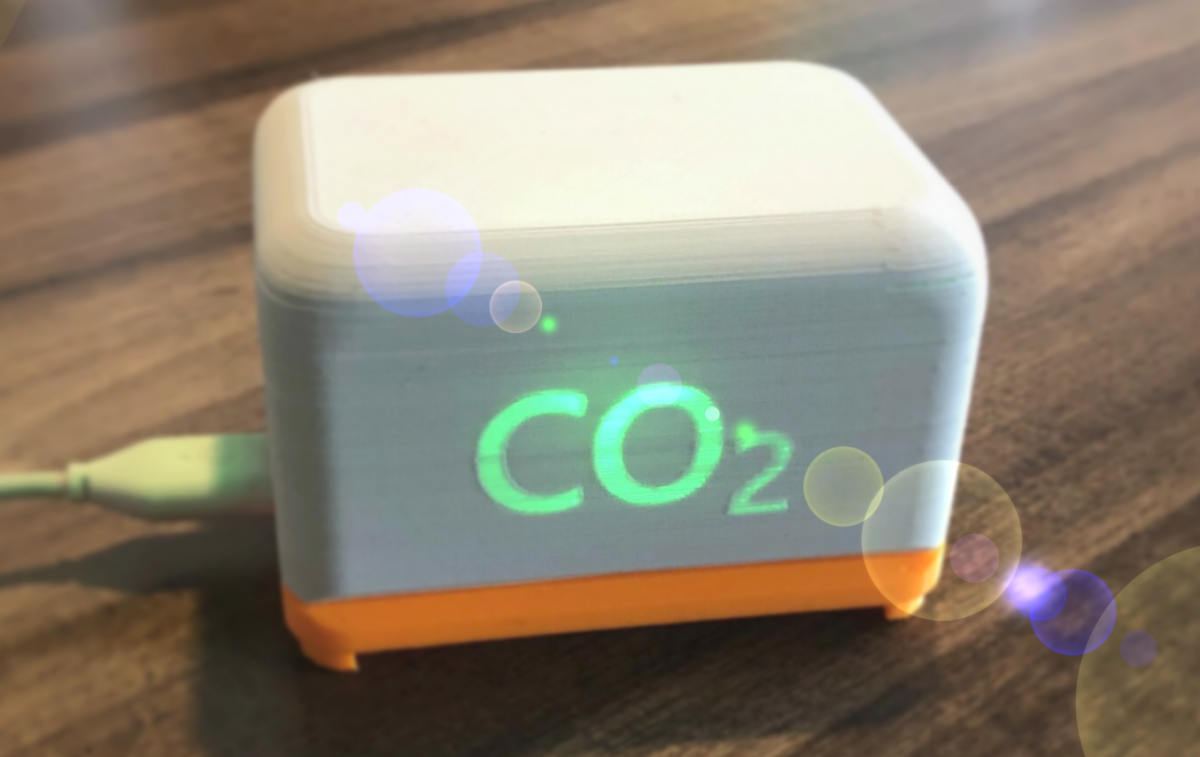Our Arduino-compatible CO₂ monitor can be used for independent measurements of the indoor CO₂ concentration as well as for scientific experiments in combination with phyphox, for example to observe photosynthesis.
News
Arduino Library
📢 Welcome “phyphox BLE”, a library for easily setting up Arduino or ESP32 experiments in phyphox. Check it out: phyphox.org/arduino/
Please accept YouTube cookies to play this video. By accepting you will be accessing content from YouTube, a service provided by an external third party.
If you accept this notice, your choice will be saved and the page will refresh.
Version 1.1.6: White Noise and Dual Tone Generator
Version 1.1.6 is rolling out with a white noise and dual tone generator plus many cute little improvements.
Changelog
Changes on Android and iOS
- Audio spectrum now allows generating white noise.
- Tone generator supports dual tone generation.
- When leaving an experiment that ran for more than 10 seconds, phyphox shows a confirmation dialog.
- Improved stability of start detection on sonar (especially for iOS).
- New “config” endpoint in the REST API (remote access) to allow reading buffer, input and export configuration.
- Background slightly darker (the increasing number of apps with dark-mode make our old colors look “washed out”).
- Improved units for slopes (i.e. m/s²/s becomes m/s³ and m/s² / rad/s² becomes m).
- Fix: Quotation marks in value element mapping break remote access.
Changes on Android
- Direct config transmission via Bluetooth now also accepts plain xml.
- Set manifest attribute to allow unencrypted http.
- Fix broken screenshot for interactive/fullscreen graphs.
- Fix crash if time output of location input is not used.
- Fix crash for graph axes with precision 0 or 1 on Samsung S6 due to Java bug https://bugs.java.com/bugdatabase/view_bug.do?bug_id=6469160.
- Allow using vendor-specific pressure sensor if detected by name.
- Prevent infinite loop in periodicity analysis module.
- Fix: Graph forgets zoom state after screen off / app switch / scroll to far tab.
- Fix: Cannot subscribe to characteristic on Chrome OS.
- Fix: Edit field does not respond to update from other user inputs.
- Make static buffers properly unwritable to prevent unexpected behavior by writing from modules with mixed outputs and to allow initializing them from external sources like Bluetooth.
- Fix crash if finished network request is reported to not visible button.
- Fix crash if models use 2D sensor data.
Changes on iOS
- Prevent duplicate additions to the experiment collection
- Share queue among data input of sensors, BLE, GPS and the analysis process to avoid receiving input data during the execution of an analysis seqeuence.
- Major changes in analysis cycle logic to be closer to Android version: Analysis is run periodically regardless of sensor input, there is a run before start, “onUserInput” is used as documented, input clear is done before writing the output.
- Fix: Access error when opening configuration from “files” app.
- Fix: No output on abs channel for 1D sensors.
- Fix: Scrollable tab bar on iOS13.
- Fix: Crash if audio permission is denied.
- Disable refresh rate limit for value view elements for more fluent feedback.
File format update to version 1.10
- Audio output now supports parametric tone and white noise generation.
- New analysis modules: interpolate, loess and sort.
- New functions in formula node: min, max and heaviside.
- New attributes to preset timed run parameters.
- New attribute “cycles” for every analysis module, which determines in which runs the module is used.
- New attribute to send blocks of network connection service “http/post” to switch between JSON arrays and JSON numbers.
- New response conversion function “none” for network connections, which is now the default.
- New graph attribute unitYperX to explicitly set a unit for the slope (i.e. y/x).
- Optimization attribute removed. (This was added very little advantage but a lot of confusion.)
- Transfer of experiment configurations now supports requesting the transfer from a second characteristic (especially useful if you are using an Arduino library that does not support reacting to subscriptions).
Registration open for our first online phyphox workshop (in German)
Registration for our annual workshop on physics teaching with phyphox is now open. This time on September 25 via Zoom: Registration form and details (in German).
Smartphones put to the test
Find four challenges and four riddles on posters at hebergement.universite-paris-saclay.fr/supraconductivite/projet/smartphone_a_lepreuve/?lang=en with a German version now included on this page. Switch language in order to get to the French original. Credits are due to Anna Khazina – Physics Reimagined and COMPAS.
Save the Date
📢Our yearly phyphox event goes online: Friday, 25 September, 9–16:00 (in German). Registration with details opens in August.
We have a week’s pause: aestanation… 💤
Online Article by the American Physical Society
The free, online magazine “Physics” from the American Physical Society has published an article, https://physics.aps.org/articles/v13/68, on “Smartphone Physics on the Rise” in their Arts & Culture section. It covers the possibilities and people involved in this field and includes a quote by Sebastian on the effects of the lockdown on app downloads and feedback.
Talk at the Bergische Universität Wuppertal
Sebastian’s talk in Wuppertal on some phyphox use cases in schools and universities has been uploaded (in German).
The talk has been given at the Symposium 04 „Digitalisierung und Naturwissenschaften – Forschung, Lehre, Praxis“ on January 31 ( http://www.digitalisierung.education/digitalisierung-und-naturwissenschaften-2/).
#homelabchallenge: Resonance
Our fifth home lab challenge is about changing the resonance in a glass. Post your results and questions as well as images and videos of your setup on Twitter or Facebook under #homelabchallenge.
Follow-up video (30.04.2020)
New assistant in phyphox team
We are happy to let you know that Robin Bläsing has also joined our phyphox team. Robin develops a sustainable concept for phyphox in order to advance its applications.


